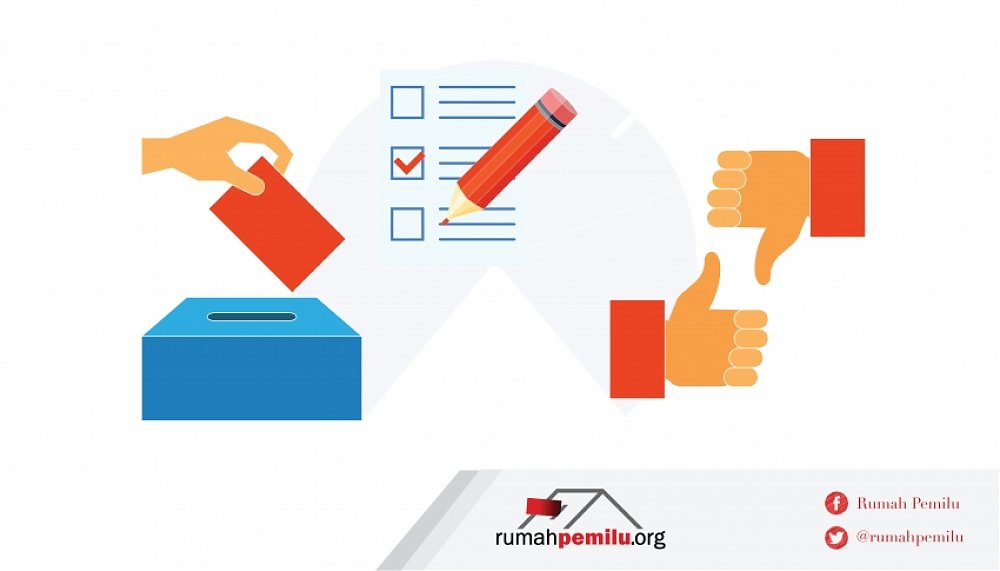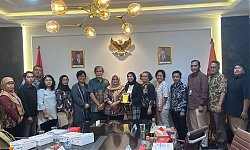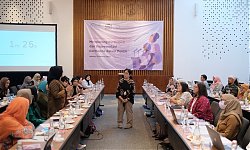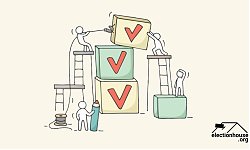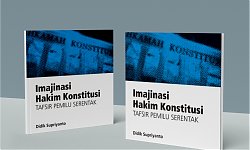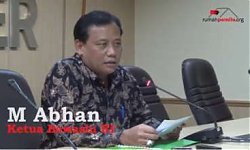Fears of a Covid-19 pandemic did not dampen voter enthusiasm for using their voting rights during the 2020 elections on December 9. A number of districts showed an increase in voter participation.
Provisional data compiled by the Electoral Commission or KPU records a tendency to increase voter participation in the 2020 elections. Of the 32 provinces in which the region holds elections, the average voter participation rate reaches 78.75 percent or potentially meets the target set, which is 77.5 percent.
In addition to participation rates that tend to exceed the target, the level of voter attendance at polling stations this year also exceeded the participation rate in the 2015 elections. In the elections five years ago, his average voter participation was at 69.02 percent. That means there has been an average increase in voter participation of more than 7 percent this year.
This achievement answers the doubts of a number of parties, including the public who had previously been worried that elections were held during the pandemic. Previously, the results of a number of Kompas polls also concluded that there are such concerns, not even a few who feel doubts about using their suffrage during the elections.
Kpu member, I Dewa Kade Wiarsa Raka Sandi, acknowledged the increasing trend of voter participation. "In the meantime, we are very grateful to all parties for their participation in the 2020 elections," he said.
The KPU itself is still waiting for final data to ensure voter participation in this election. However, from the provisional data, a number of regions did show an increase in voter enthusiasm in the local elections simultaneously this time. One of them is in the Medan city elections. Voter participation in the region was the lowest in the 2015 regional elections, at about 25.38 percent. That is, only a quarter of voters on the voter list come to the polling place.
In this year's regional elections, Medan experienced a surge in turnout, although it may still be the lowest recorded compared to 269 other elections that this year held simultaneous elections. From the provisional kpu data, voter participation in the city of Medan in this election reached 47.59 percent. That is, there was an increase of about 22.2 percent of voters who were present at the polling place.
Lecturer of Department of Political Science FISIP University of North Sumatra (USU) Medan, Faisal Andri Mahrawa, said that the increase in participation in the city of Medan can not be separated from two factors. First, the performance of organizers who continue to campaign for safe elections in the midst of a pandemic with relatively strict health protocol guarantees. Second, it is the attractiveness factor of both candidates who are fighting for voter sympathy. "A relatively attractive pair of candidates becomes an attraction in itself," Faisal said.

The second factor is certainly inseparable from the figure of Muhammad Bobby Afif Nasution, the son-in-law of President Joko Widodo, who is running as a candidate for mayor of Medan. In the temporary recapitulation of KPU Medan, Bobby who is paired with Aulia Rachman won 53.5 percent of the incumbent pair Akhyar Nasution-Salman Alfarisi.
However, the attractiveness of prospective spouses is not always correlated with the level of participation. The phenomenon of Pasuruan city elections presenting popular candidates, such as Saifullah Yusuf, a former minister and former Deputy Governor of East Java, despite winning more than 60 percent, the participation rate plummeted to 11.5 percent. Previously, in the 2015 elections the voter participation rate reached 79.6 percent. However, in this election, it dropped to 68.1 percent, far from the pasuruan city KPU target of 80 percent.
Exceeded target
Kpu provisional data also shows, of the 32 provinces whose regions hold regional elections, both provincial, district, and city elections, at least on average most of the voter participation figures exceeded the target set. North Sumatra province recorded the most elections exceeding the target participation rate. In this province there are nine regions whose participation rate exceeds the KPU target of 77.5 percent.
After North Sumatra, Bengkulu Province became the second largest region with participation rates exceeding the target set, namely occurring in seven regions. The third most recorded position is in South Sumatra Province with six regions exceeding the target participation rate.
The highest average voter participation was recorded in West Sulawesi Province with 87.70 percent, followed by Southeast Sulawesi (87.48 percent) and Gorontalo (86.20 percent).
If you look at the development of temporary data coming in, the average high participation rate comes from local elections outside Java. The five district elections that recorded the highest participation rates were the Arfak Mountains and Raja Ampat (West Papua), Bolaang Mongondow Timur and Bolaang Mongondow Selatan (North Sulawesi), and Dompu (NTB). While the five highest participations for city elections were recorded in Tomohon (North Sulawesi), Tidore Islands and Ternate (North Maluku), Sungai Penuh (Jambi), and Blitar (East Java).
The trend of rising participation rates is understood by members of the Board of Trustees of Perludem, Titi Anggraini, as a form of voter compliance and loyalty in responding to official state-run programs. Voter participation in Indonesia tends to be higher when compared to many countries. "Our voters have a culture of high political compliance when it comes to the official state agenda," he said.
Efforts to mobilize voters to exercise their rights in this election are also likely to increase, especially in regions with tight levels of electoral competition. Titi said the south Tangerang city elections could be one example. Strong competition among the three candidates in the region provides "appeal" for voters to exercise their suffrage. This is inseparable from the three spouses of candidates have a kinship of political figures. No wonder that in this year's elections South Tangerang experienced an increase in participation rate, which reached 60.40 percent, an increase of 4.25 percent compared to the 2015 elections.
In addition, massive socialization efforts from organizers and supported by the government, especially related to the application of health protocols at polling stations, have influenced the interest of voters to attend using their suffrage.
The phenomenon of voter acceptance of the electoral process as long as health protocol guarantees are met has been read from the results of kompas polls long before the elections were held. Related to voter registration, for example, 80 percent of respondents in the March 2020 poll admitted to being willing to meet KPUD officers during the implementation of health protocols. This is a portrait of the high potential of voters following elections as long as they meet the standards that must be applied in the midst of this pandemic.
The high participation rate is the door to strengthening the legitimacy of the results of the election process. However, the next challenge is how elected regional heads make that legitimacy a great mandate to prove to voters that what was promised during the campaign was not just a slogan, but as something that had to be cashed in.
Do not let the enthusiasm and passion of voters use their suffrage, even in the midst of this worrying pandemic, become futile because the elected regional heads only make them as a vehicle to seize power in the region. (YOHAN WAHYU/ R&D KOMPAS)
Clip from an article published in Kompas.ID https://kompas.id/baca/riset/2020/12/16/gairah-memilih-tinggi-meski-di-tengah-pandemi-2/

